Disclosure: This article contains affiliate links. We may earn a commission from purchases at no extra cost to you, which helps our travel content.
The first time I wandered through Bologna's terracotta-hued porticoes on a crisp autumn afternoon, I realized I'd discovered Italy's best-kept culinary secret. While tourists flock to Rome and Florence, Bologna quietly reigns as the country's gastronomic capital, a city where food isn't just sustenance—it's a religion. After five visits to this remarkable city (yes, I'm slightly obsessed), I've cultivated relationships with local chefs, shopkeepers, and food artisans who have shared their treasured haunts and family recipes. What I've discovered is that in Bologna, the most authentic experiences happen when you follow the locals—to the unassuming trattorias serving hand-rolled pasta, to the bustling markets where nonnas haggle over the freshest produce, and to the century-old salumerias where mortadella is sliced with the precision of a surgeon. This weekend guide is my love letter to Bologna's food culture and your roadmap to eating like a true Bolognese—no tourist traps, just pure, unadulterated Italian culinary bliss.
Morning Rituals: Breakfast Like a Local
In Bologna, mornings begin with a symphony of porcelain cups clinking against saucers and the powerful hiss of espresso machines. Unlike the hearty American breakfasts I grew up with in Glendale, Bolognese breakfasts are swift, standing affairs—but don't mistake brevity for lack of importance.
My perfect Bologna morning starts at Caffè Terzi, a narrow, unassuming café on Via Oberdan where locals crowd the marble counter. Here, coffee is elevated to an art form. Order a caffè (espresso) or my personal favorite, a velvety caffè con panna topped with a dollop of fresh whipped cream. Pair it with a cornetto (Italian croissant) filled with pistachio cream for a breakfast that perfectly balances bitter and sweet.
For something uniquely Bolognese, seek out lo zabaione—a frothy, warm custard of egg yolks, sugar, and Marsala wine served in espresso cups. At Pasticceria Gamberini, a historic pastry shop dating back to 1907, their zabaione comes with crisp, house-made savoiardi cookies for dipping.
During my last visit, I befriended Marco, a barista at Caffè Aroma who taught me that Bolognese never rush their coffee, even when standing. "The espresso is small," he told me with a wink, "but the pleasure should be big." This philosophy epitomizes Bologna's approach to food—small moments of culinary perfection to be savored, not rushed.

💡 Pro Tips
- Always stand at the counter for coffee to pay local prices—sitting down can cost twice as much
- Look for pastry shops displaying the 'Produzione Propria' sign, indicating everything is made in-house
- Try the regional specialty 'Torta di Riso'—a sweet rice cake that locals enjoy for breakfast
The Sacred Lunch: Pasta Perfection
If there's one meal you absolutely cannot compromise on in Bologna, it's lunch. Forget the quick sandwich at your desk that defines my workday back in Bristol—in Bologna, lunch demands reverence.
The city's nickname, "La Grassa" (The Fat One), was earned through centuries of pasta perfection. While tourists often ask for "spaghetti bolognese," locals would never dream of pairing long pasta with their beloved meat sauce. Instead, seek out authentic tagliatelle al ragù—flat, ribbon-like pasta that perfectly captures the rich, slow-simmered sauce that simmers for hours, not minutes.
My holy grail for this dish is Trattoria Anna Maria, where Signora Anna Maria has been rolling pasta by hand since 1985. During my second visit to Bologna, she invited me into her kitchen where I watched her transform eggs and flour into silken sheets of pasta with mesmerizing efficiency. "The pasta must be alive under your fingers," she told me as her hands worked the dough, a philosophy I've tried (unsuccessfully) to replicate at home with my pasta maker.
Equal in importance to tagliatelle is Bologna's signature tortellini en brodo—tiny, hand-folded pasta parcels swimming in a clear, golden capon broth. At Oltre, chef Lorenzo Giacomelli serves a contemporary version that respects tradition while adding subtle modern touches. The broth alone simmers for 12 hours, creating a depth of flavor that brought tears to my eyes the first time I tasted it.
For a more casual but equally authentic experience, join the queue at Pasta Fresca Naldi, where locals line up for fresh pasta to cook at home. Even if you're staying in a hotel without kitchen access, their prepared tortelloni with seasonal fillings make for a perfect picnic in Piazza Maggiore.

💡 Pro Tips
- True Bolognese ragù never contains garlic or herbs—just meat, soffritto, tomato, wine, and patience
- The best trattorias are often closed on Sundays and Mondays; plan accordingly
- Ask for a 'tris di pasta' (pasta trio) to sample three different varieties in smaller portions
Market Marvels: Quadrilatero & Mercato delle Erbe
No food pilgrimage to Bologna is complete without diving into its historic markets, where the sensory overload rivals anything I've experienced in my travels across four continents.
The Quadrilatero, a medieval market grid just off Piazza Maggiore, has been Bologna's commercial heart since Roman times. These narrow lanes transform into a gastronomic wonderland where food shops specialize in single products perfected over generations. At Tamburini, a salumeria established in 1932, I watched in awe as the proprietor sliced mortadella so thin it was nearly transparent, then offered me a piece draped over his knife—a ritual I now recognize as a gesture of Bolognese hospitality.
Nearby, Formaggeria Vecchia Malga showcases wheels of Parmigiano-Reggiano aged to different specifications. During my last visit, I participated in an impromptu tasting of 24, 36, and 48-month aged cheeses, each with progressively more complex crystalline structures and umami notes. This is where I invested in a cheese knife to properly serve the wedge I couldn't resist bringing home.
For a more contemporary market experience, Mercato delle Erbe offers a perfect blend of traditional food stalls and modern eateries. The fruit and vegetable vendors display produce with artistic precision—I've spent hours photographing the geometric arrangements of artichokes and the vibrant spectrum of heirloom tomatoes. The market's central dining area transforms into a lively aperitivo spot by late afternoon, where I've shared communal tables with university professors, artists, and multi-generational Bolognese families.
My insider tip: visit Paolo Atti & Figli, a pasta shop founded in 1880, where the sfogline (pasta makers) still roll and cut dough by hand in the front window. Their tortellini are so tiny that local legend claims you can fit seven on a single spoon—the hallmark of proper Bolognese craftsmanship.

💡 Pro Tips
- Shop where the nonnas shop—if you see elderly Italian women selecting produce, you're in the right place
- Visit markets before noon for the freshest selection and to avoid the tourist rush
- Most vendors offer vacuum-sealing services for cheeses and cured meats you want to bring home
Aperitivo Culture: The Art of Pre-Dinner Drinking
If breakfast in Bologna is brief and lunch is sacred, aperitivo is where the city truly comes alive. This pre-dinner ritual—somewhere between happy hour and a light meal—transforms Bologna's piazzas and alleyways into buzzing social hubs as day transitions to evening.
My love affair with aperitivo culture began during my first visit to Bologna when a local friend insisted we meet at Le Stanze, a former 16th-century chapel converted into a bar where cocktails are served beneath original Renaissance frescoes. Here I learned that aperitivo isn't just about drinking—it's about stimulating the appetite and setting the stage for dinner through both food and atmosphere.
The classic Bolognese aperitivo drink is the Spritz—Aperol or Campari mixed with prosecco and soda water—but don't miss the opportunity to try something uniquely local. At Camera Con Vista, overlooking Piazza Santo Stefano, I discovered the Bologna-born Pimm's Bolognese, which substitutes traditional lemonade with homemade cedrata (citron soda) for a refreshing twist on the British classic.
What elevates Bologna's aperitivo scene above other Italian cities is the quality and quantity of complimentary food. At Mercato di Mezzo's rooftop terrace, my €10 Negroni came with a spread of mortadella, crescentine (fried dough pockets), and squacquerone cheese that could have easily served as dinner. For the ultimate aperitivo experience, Osteria del Sole—operating since 1465—offers a unique bring-your-own-food policy. Purchase provisions from surrounding market stalls, then enjoy them in this historic tavern while sipping local Pignoletto wine.
During autumn visits, I've found aperitivo takes on a special quality as locals return from summer holidays and students flood back to Europe's oldest university. The energy is palpable as conversations flow between tables and strangers become friends over shared plates and clinking glasses. This is Bologna at its most authentic—a city where food and drink are merely vehicles for what Italians value most: connection.

💡 Pro Tips
- Aperitivo typically runs from 6-9pm, with 7pm being the sweet spot for best atmosphere
- Look for places offering 'aperitivo abbondante' for the most generous food spreads
- Venture beyond the main piazzas to find aperitivo spots frequented by locals and university students
Sweet Endings: Bologna's Hidden Dessert Traditions
While Bologna's savory reputation often overshadows its sweet side, the city harbors dessert traditions that deserve equal attention. Unlike the globally recognized tiramisu or cannoli from other Italian regions, Bologna's dolci remain delightfully under-the-radar.
My personal obsession is certosino (or panspeziale), a dense, spiced fruit cake studded with nuts, candied fruits, and dark chocolate that dates back to medieval monastery kitchens. During my fall visits, I've watched this cake appear in every pasticceria window as Christmas approaches. At Paolo Orsoni, a family-run bakery operating since 1904, I was gifted their closely guarded recipe after expressing genuine interest in the cake's history—though I was sworn to secrecy about certain ingredients.
Equal in importance is torta di riso—a delicate rice cake scented with lemon and vanilla that showcases Bologna's historic connection to rice cultivation in the Po Valley. The version at Pasticceria Pallotti has converted even my rice-pudding-averse friends with its light texture and subtle sweetness.
For something uniquely Bolognese, seek out raviole—not the pasta, but sweet pastry crescents filled with mostarda bolognese (a jam-like preserve of quince, mustard, and spices). These humble cookies are traditionally baked for the Feast of San Giuseppe but can be found year-round at Forno Brisa, a modern bakery committed to ancient grains and traditional techniques.
My evening ritual in Bologna always includes gelato, and I've systematically tested dozens of gelaterie across the city. While tourists queue at the famous chains, I slip into Cremeria Santo Stefano for their crema della nonna—a custard-based flavor with lemon zest and pine nuts that tastes like something an Italian grandmother would make. Their seasonal offerings showcase Bologna's agricultural bounty, from summer's fichi caramellati (caramelized fig) to autumn's castagne e rhum (chestnut and rum).
To truly understand Bologna's relationship with chocolate, visit Majani, founded in 1796 and inventors of the first solid chocolate in Italy. Their signature FIAT cremino—layered squares of hazelnut and almond chocolate—makes for the perfect portable souvenir. I always bring home a selection packed in their elegant gift box that preserves these delicate confections even through long journeys.

💡 Pro Tips
- Most traditional pasticcerie are closed on Monday, so plan your sweet tooth cravings accordingly
- Ask for gelato 'senza panna' (without cream) unless you want whipped cream on top
- The best gelaterias display their flavors in covered metal wells, not colorful mountains
Beyond the Classics: Bologna's Modern Food Scene
While tradition reigns supreme in Bologna, the city's food scene isn't frozen in amber. As a returning visitor, I've watched with fascination as a new generation of chefs and producers respectfully push boundaries while honoring their culinary heritage.
At Vetro, housed in a former glassworks factory in the trendy Bolognina district, chef Daniele Minarelli transforms classic Bolognese dishes through modern techniques without sacrificing soul. His deconstructed lasagna—featuring paper-thin pasta sheets, 48-hour ragù, and aerated béchamel—offers all the comfort of nonna's version but with contemporary precision. What impresses me most is the restaurant's commitment to local producers; each menu lists the exact farm or artisan behind every primary ingredient.
The natural wine movement has also found fertile ground in Bologna, with enotecas like Camera a Sud championing small-scale, organic producers from Emilia-Romagna. During my last visit, owner Gianluca guided me through a flight of Lambrusco that shattered my preconceptions about this often-maligned sparkling red. "We're not reinventing tradition," he explained, "we're rediscovering it," noting that chemical-free winemaking was the norm before industrialization.
For those seeking to bring Bologna's flavors home, Bottega Portici offers cooking classes where you'll learn to make pasta alongside local sfogline (pasta makers). I've taken their tortellini workshop twice—first as a novice and later to refine my technique—and now confidently host pasta-making dinner parties back in Bristol using my pasta board that mimics the traditional Bolognese work surface.
What excites me most about Bologna's evolving food scene is its commitment to sustainability. At Mercato Ritrovato, the Saturday farmers' market near the Mambo Museum, the zero-kilometer philosophy brings producers from within 40km of the city. Here I discovered Vecchia Dispensa, a family producer creating balsamic vinegar using solar power and sustainable farming practices. Their 12-year aged condiment has become my kitchen staple, transforming even the simplest dishes with its complex sweetness.
Even with these innovations, what remains constant is Bologna's resistance to culinary fads and tourist pandering. This is a city that changes slowly and purposefully, always with one foot firmly planted in tradition.

💡 Pro Tips
- Look for the 'Qui Mangio Bene' sticker in restaurant windows—a local certification for authentic cuisine
- Many innovative restaurants close during August when locals vacation; plan accordingly
- For the best modern dining experiences, explore neighborhoods like Bolognina and San Donato beyond the historic center
Final Thoughts
As I sip my final caffè at Caffè Terzi before heading to the airport, I'm struck by how Bologna reveals itself slowly, like the layers of flavor in a properly aged Parmigiano-Reggiano. This is not a city that surrenders its secrets to casual tourists rushing between Instagram spots. Rather, it rewards the curious traveler willing to linger, to ask questions, and most importantly, to eat with intention. Whether you're twirling fresh tagliatelle around your fork, navigating the controlled chaos of the Quadrilatero, or raising an Aperol Spritz as the sun sets behind medieval towers, Bologna offers a masterclass in living well through food. As the locals say, 'Si mangia bene a Bologna'—one eats well in Bologna. But perhaps more accurately, in Bologna, one learns to appreciate not just the excellence of the food, but the culture of care, quality, and connection that brings it to your plate. Until your next meal in La Grassa, mangia bene!
✨ Key Takeaways
- Bologna rewards slow travel—plan fewer activities with more time to savor each experience
- The best food experiences happen where locals eat, often in unassuming venues away from tourist centers
- Understanding the cultural context of dishes enhances your appreciation of Bologna's cuisine
📋 Practical Information
Best Time to Visit
Fall (September-November)
Budget Estimate
€80-120 per day for food and drinks
Recommended Duration
Long weekend (3-4 days)
Difficulty Level
Easy
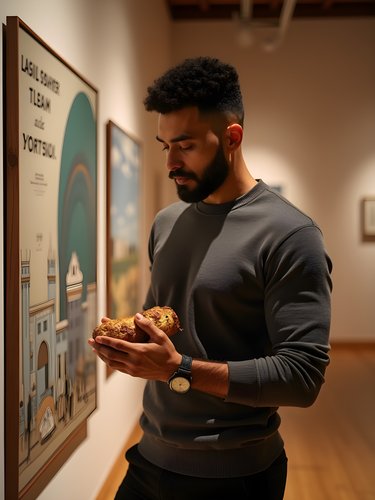
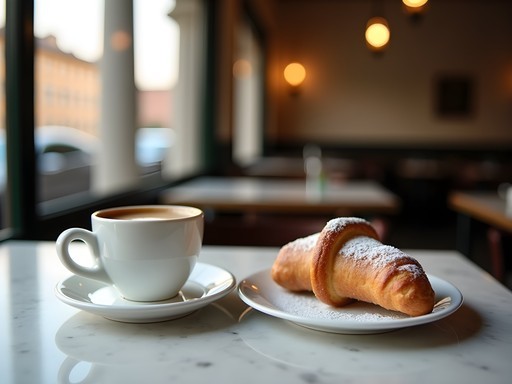









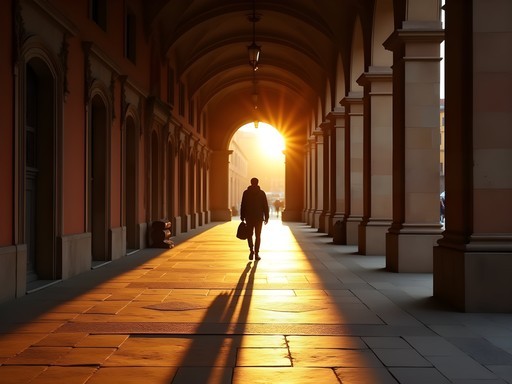


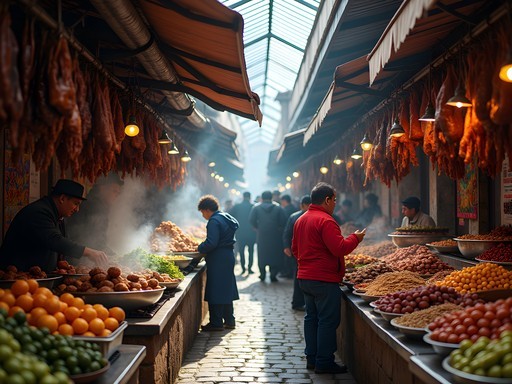

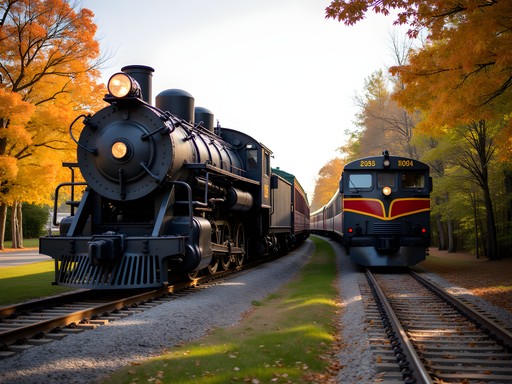
Comments
citybackpacker
Bookmarking this for my return trip! Bologna stole my heart (and expanded my waistline 😂).
sunsetmaster
Just wanted to add that the Mercato delle Erbe is even better than described here! Go upstairs to the little food court area where there's a wine bar that does amazing local wine flights paired with mortadella and other local specialties. We spent three hours there chatting with locals who gave us their personal restaurant recommendations. The best food we had in Bologna came from those local tips!
redexplorer
Any tips on avoiding tourist traps? I've heard some places near the main square serve microwaved pasta to tourists 😱
Taylor Moreau
A good rule in Bologna: if you see pictures of food outside or menus in 5 languages, walk away. I've been visiting Bologna quarterly for business over the past decade and always look for places where you hear Italian being spoken. My trusted spot is Trattoria di Via Serra - no frills, just exceptional food. I always bring my pocket Italian phrasebook which has a food section that's been invaluable.
mountainninja
Is winter a good time to visit Bologna for food? Planning a January trip and wondering if any seasonal specialties are worth trying then!
sunsetmaster
Winter is PERFECT for Bologna! That's when the hearty ragù and tortellini in brodo really shine. Plus the city is less crowded. Don't miss the cotechino with lentils if you're there around New Year's - it's a local tradition!
mountainninja
That sounds amazing, thanks! Any specific restaurants you'd recommend for these winter dishes?
sunsetmaster
Try Osteria dell'Orsa for budget-friendly or Trattoria Serghei for something more traditional. Both are locals' favorites. Just make reservations - even in winter the good places fill up!
sunnyperson3588
Those pasta photos are making me so hungry right now! 🍝😍
Oliver Duncan
Timothy, mate, you've captured the soul of Bologna perfectly! I spent three weeks there last year living above a small bakery in the university district. The morning ritual of cornetto and caffè became almost spiritual. My budget tip: many of the small bars offer an aperitivo buffet that's practically a full meal for the price of one drink. I practically lived off these during my stay! My favorite was Camera a Sud - fantastic spritz and the most amazing spread of local cheeses. Definitely hitting Bologna again when I'm back in Italy next spring!
citybackpacker
Just got back from Bologna last week and this post is spot on! The tortellini in brodo at Trattoria Anna Maria was life-changing. I'd add that it's worth venturing slightly outside the city center - we found this tiny place called Osteria al 15 where the nonna still makes pasta by hand every morning. No English menu, just pure Bolognese magic!
redexplorer
Was it hard to order without an English menu? Going next month and my Italian is basically nonexistent 😅
citybackpacker
Not at all! Just point at what others are eating or use Google Translate. Most places have patient staff. The food vocabulary is worth learning though - tagliatelle, tortellini, mortadella, etc.
vacationgal4462
Those mortadella photos are making me hungry! Saving this for my Italy trip next year!
adventurestar
Just got back from Bologna and this post is spot on! We did the pasta making class at Le Sfogline and it was the highlight of our trip. The grandmas teaching us barely spoke English but somehow we managed to learn how to make the perfect tortellini! Also, don't sleep on the gelato at Cremeria Santo Stefano - the pistachio will change your life. One tip: most good restaurants need reservations, even on weeknights. We learned that the hard way!
vacationgal4462
How far in advance did you book the pasta class? Thinking of doing this in November!
adventurestar
We booked about 3 weeks before and got the last spots! Definitely book early for November since it's getting into prime truffle season and the city gets busier.
Fatima Sims
Timothy, this brings back so many memories! I was in Bologna last fall and still dream about that mortadella. One spot you didn't mention that I'd add: I stumbled upon this tiny place called La Baita Formaggi in the Quadrilatero that let me sample about 15 different aged Parmigiano Reggiano - from 12 months to 48 months aged. The difference in flavor profiles was mind-blowing! And their tigelle with squacquerone cheese... I'm literally drooling thinking about it. Bologna truly is Italy's food capital!
Venture X
Premium card with 2X miles, $300 travel credit, Priority Pass